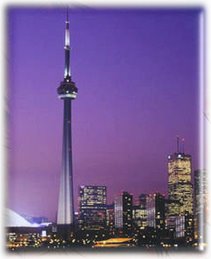by: Ron Ryder, The Guardian
The province is improving its welcoming of young immigrants with some emergency funding to help newcomers master the English language. Schools in the Eastern School District, particularly in central Charlottetown, faced a surprising demand for English as a second language (ESL) classes, when it saw 108 unanticipated immigrant children register for the 2006-07 school year, on top of around 50 who had been expected. The new students far exceeded the capacity of the two ESL specialists who had been hired by the Eastern district and raised questions about whether schools were being left to cope with the fallout of provincial immigration policies. Wednesday, the capital’s schools got some good news. Premier Pat Binns and Education Minister Mildred Dover drove to Queen Charlotte intermediate school to announce immediate funding of $216,500 for four more ESL teachers, plus thousands more for texts and resources. Binns said the money will allow the district to provide 60 hours of ESL to its new students. “We’re now looking at people from different backgrounds, all coming to P.E.I. It’s very challenging and quite exciting,” said the premier. The news was welcomed by Kevin Arsenault, executive director of the P.E.I. Association for Newcomers to Canada. He said it was notable that government was able to come up quickly with such an increase to ESL funding. Arsenault said the extra effort could make a major difference in the success of immigrant families adapting to Prince Edward Island. “Frankly, if they had waited for the next budget period, these immigrant families would no longer be living on Prince Edward Island,” Arsenault said.
Arsenault said they have had reports of some 281 people applying to immigrate to Prince Edward Island since the new year. The association tries to ease the transition of immigrant children through two full-time staff on an immigrant student liaison program. Sandy MacDonald, superintendent of the Eastern School District, said he was happy with the extra money and was already in contact with potential ESL teachers.He said he hopes to have the four positions filled almost immediately. “We’ve been lucky in finding people who have expertise in this field. Some of them are existing staff who had the training and were working in other areas, others are people who have had the training and haven’t been using it, including some people who have taught English overseas,” he said. MacDonald said ESL classes can require a great deal of flexibility since some immigrants arrive with high academic achievement, apart from their English, while others may be from areas where schooling has been limited. “I think we’ve been fortunate in that the people who have been coming here generally come from families that put a high value on education,” he said. “I think for the most part these are people who are going to do well once they get some mastery of English.”
The province is improving its welcoming of young immigrants with some emergency funding to help newcomers master the English language. Schools in the Eastern School District, particularly in central Charlottetown, faced a surprising demand for English as a second language (ESL) classes, when it saw 108 unanticipated immigrant children register for the 2006-07 school year, on top of around 50 who had been expected. The new students far exceeded the capacity of the two ESL specialists who had been hired by the Eastern district and raised questions about whether schools were being left to cope with the fallout of provincial immigration policies. Wednesday, the capital’s schools got some good news. Premier Pat Binns and Education Minister Mildred Dover drove to Queen Charlotte intermediate school to announce immediate funding of $216,500 for four more ESL teachers, plus thousands more for texts and resources. Binns said the money will allow the district to provide 60 hours of ESL to its new students. “We’re now looking at people from different backgrounds, all coming to P.E.I. It’s very challenging and quite exciting,” said the premier. The news was welcomed by Kevin Arsenault, executive director of the P.E.I. Association for Newcomers to Canada. He said it was notable that government was able to come up quickly with such an increase to ESL funding. Arsenault said the extra effort could make a major difference in the success of immigrant families adapting to Prince Edward Island. “Frankly, if they had waited for the next budget period, these immigrant families would no longer be living on Prince Edward Island,” Arsenault said.
Arsenault said they have had reports of some 281 people applying to immigrate to Prince Edward Island since the new year. The association tries to ease the transition of immigrant children through two full-time staff on an immigrant student liaison program. Sandy MacDonald, superintendent of the Eastern School District, said he was happy with the extra money and was already in contact with potential ESL teachers.He said he hopes to have the four positions filled almost immediately. “We’ve been lucky in finding people who have expertise in this field. Some of them are existing staff who had the training and were working in other areas, others are people who have had the training and haven’t been using it, including some people who have taught English overseas,” he said. MacDonald said ESL classes can require a great deal of flexibility since some immigrants arrive with high academic achievement, apart from their English, while others may be from areas where schooling has been limited. “I think we’ve been fortunate in that the people who have been coming here generally come from families that put a high value on education,” he said. “I think for the most part these are people who are going to do well once they get some mastery of English.”


